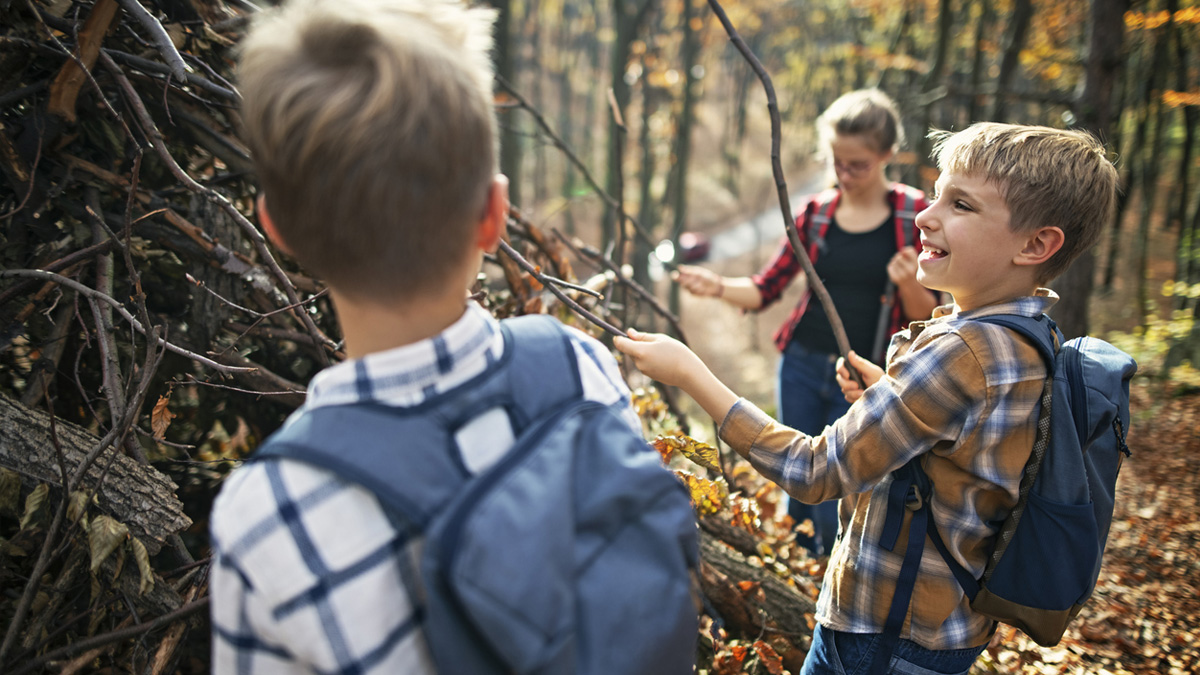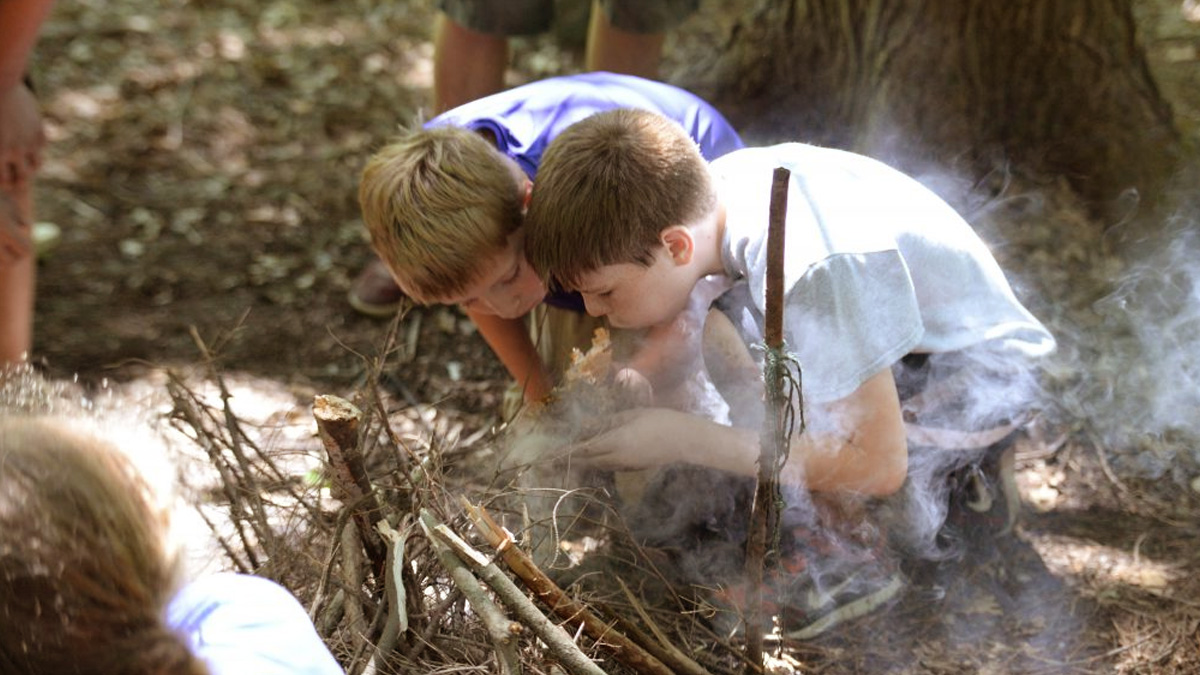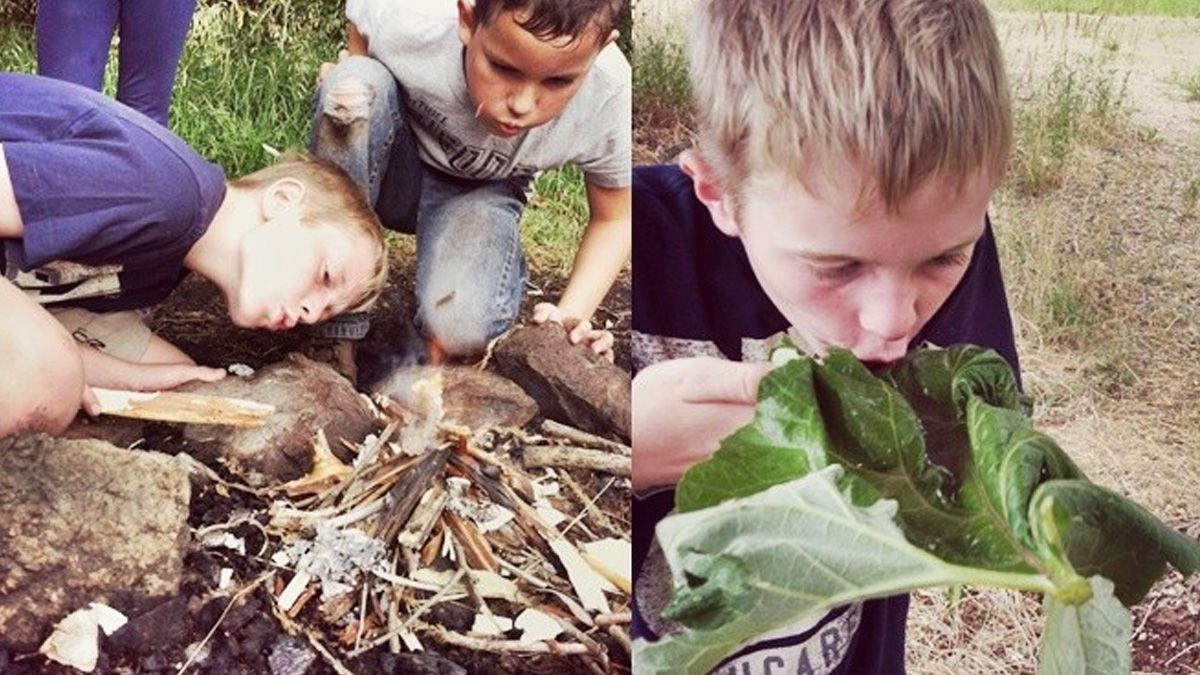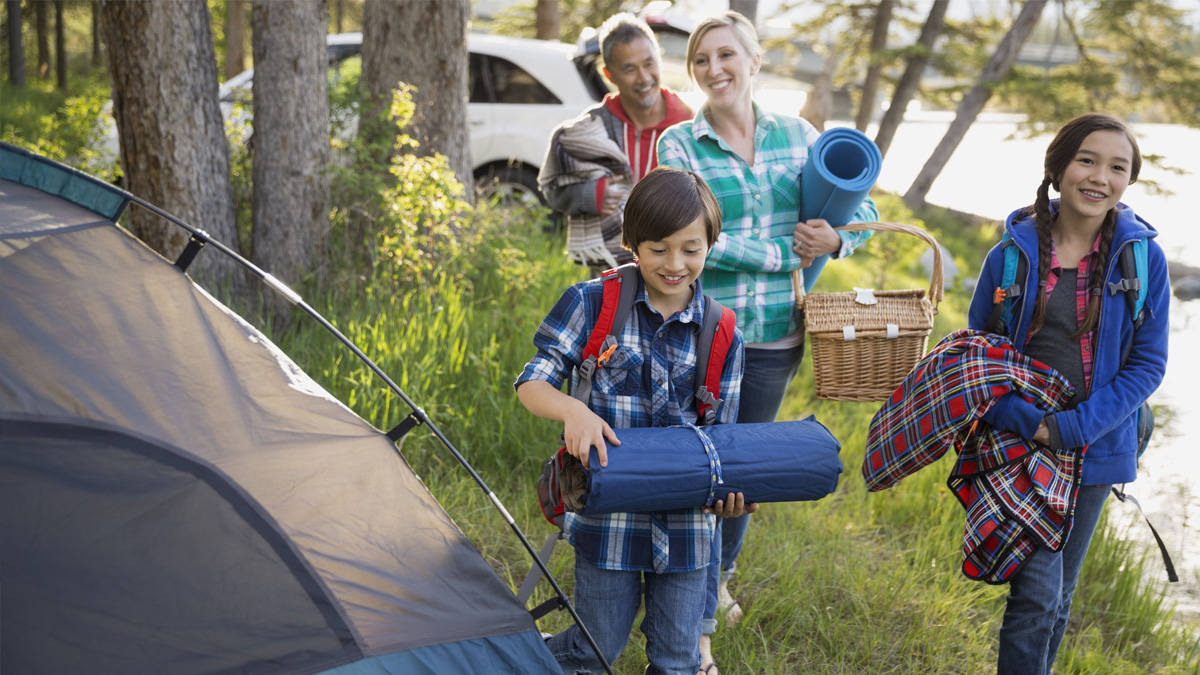on
As a parent you know best which of these skills are age appropriate for your child(ren). And since it takes time to learn skills it is never to early to start teaching your kids these skills and having them practice them with supervision.
Of course this list is far from exhaustive and there are many more skills that are needed for long term survival like how to grow a garden, preserve food via canning, how to care for livestock etc.
Survival Skills Your Child Needs To Know
- When to Stop! Every child needs to learn to stop the moment they realize they are lost. This may be contrary to their instinct to run around looking for help or to run to where they think help is. It’s important to ingrain this survival strategy until you’re sure they’ll do it. One trick (especially useful for younger children) is to have them find a favorite tree, rock or other natural feature if they get lost. The children should give that thing a name, make friends with it, talk to it, and stay with this new “friend” until someone comes to help them. This encourages kids to stay in one spot (making it easier for searchers to find them), and it gives them an outlet to voice their fears and thoughts. Even adults need to remember to stop and take stock of what is going on before coming up with a plan and that plan might just be to stay put!
- How to insulate their clothing. Hypothermia is a major risk for any outdoors person, but especially for children. Their smaller size puts them at risk to cool off dangerously at night or if they get wet, even in the summertime. Teach your young outdoor adventurers to use insulation in their clothes if they start to feel cold. Have them actually do this for training purposes. Make the exercise fun by calling it a “scarecrow suit” or something else that they might be amused by. Have them tuck their pants into their socks and fill the pants with dry vegetation. Then tuck their shirt into their pants and fill the shirt. If they’re wearing little clothing, as kids tend to do in summer, let them know that they can at least fill the shirt, even if they’re wearing shorts. This will help to keep their torso warm at least. Have them make a “blanket” of dry leaves to burrow under.

- How to build a simple shelter. Shelter building can be a lot of fun for children, especially if you make it fun for them. Simple leaf huts and lean-tos are easy to build, and the kids can use it as a fort when you’re done. If you teach them to build the frame in a sturdy manner and insulate the walls with thick vegetation, their shelter could certainly save their life. Make sure you show them that the natural shelter is a camouflaged shelter, so they need to mark it somehow for visibility. A strip of cloth or a bright bandana makes a great flag when hung on a pole over the hut.
- How to find safe water. Rain can be the safest source of water for kids in an emergency. But they also need to know how to boil water from a stream or creek. In the event that they cannot get a fire going, or find a container to boil with, teach them to find smaller, cleaner streams to drink from directly in a dire emergency. This water may have pathogens that might make them sick, but it’s better to be alive and ill than dead from dehydration. Doctors can treat most causes of dysentery, but they can’t fix dead.
- How to signal for help. This is their ticket to get home. Have each child carry a whistle on a necklace in the outdoors, and do some signal drills to teach them how to use it. Let the kids blow the whistle three times, as loud and long as they can (they usually enjoy this in training). Then repeat the procedure a couple of times an hour. If they hear a noise (calls or other whistle blasts), then repeatedly blow three blasts until they make contact. This can be done as a version of hide and seek — you can train your kids and have some fun. One child can go off several hundred yards and hide, pretending to be lost. The rest of the family can be the searchers who can only move during the three whistle blast period. The searchers can call back to the lost kid with two whistle blasts and try to get them to respond to the searchers.

- How to start a fire and fire safety. Teach children how to gather fire tender alongside you as you gather. Teach them how to use matches, a lighter and a ferro rod. Show them different types of fires and explain the purposes for each. For older children, help them put together a fire kit to carry with them when they are on outdoor adventures. Usually, if it is safe for them to carry a knife it is safe for them to carry a fire kit. A knife and fire or a combo that every child that can safely do so should be carrying.
- How to use a knife. From the beginning, children need to be taught that knives are tools, not toys. This is a fundamental point in learning about the world, that some things must be treated with respect. Make sure kids understand the proper care, such as all knives should be put away dry, and blades should be kept sharp. As they demonstrate their skill and dexterity teach them how to hone a knife too. A fixed blade is a better starter knife than a folding blade, and starting them off in the kitchen which is a more controlled environment is usually the best choice. Once they show mastery of a kitchen knife a small fixed blade knife like the Mossback Bird or Trout knife is a good choice. For older children, they may be ready to move right to a 4-5″ fixed blade knife like a Morakniv Garberg.
- Basic first aid. For young kids explaining how to clean small cuts, apply an ointment, and apply a bandage is a good starting point. Older kids can attend first aid classes in the community, and if they show an aptitude may be able to take an advanced wilderness first aid course too.
- How to read the sky. Teach your children how to watch for approaching weather hazards. This allows them to seek shelter before a storm hits. Make sure you teach them weather patterns for the areas you are in most frequently. Also even if you are not in “tornado country” teach your children how to recognize the signs of a tornado as they do pop up in unexpected places. Several years ago I had just taught my then first grader about what a tornado sky looks like when we encountered and avoided a tornado in a place that “never” has them because she spotted the “weird sky” and pointed it out to the adults that had yet to notice it.

Subscribe for FREE to Continue Reading
Subscribe for FREE to get access to all of our premium content and get an email when new content is added.
The purpose of this blog is to present preparedness ideas for those that are brand new to the idea of being prepared for various disasters. We will also provide information for experienced ‘preppers’.
Get access to premium content and more!





